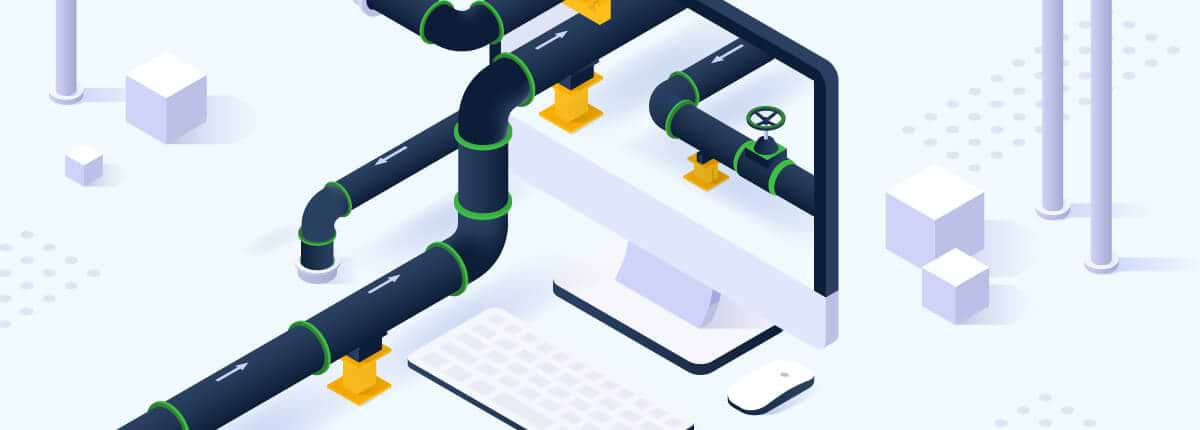Optimizing the Software Delivery Pipeline
At this point in time, many organizations have already been practicing DevOps for years. DevOps pipeline automation is nothing new to them. Yet just because you may have had a pipeline solution in place for a long time doesn’t mean you can’t find ways to get even more out of it. After all, continuous improvement is part and parcel of DevOps, which means that optimizing your software delivery pipeline should be a never-ending goal.
With that reality in mind, here’s an overview of tips for getting even more value out of your DevOps pipeline and CI/CD delivery practices.
What is the software delivery pipeline?
In DevOps, the software delivery pipeline is the set of processes and tools that teams use to design, write, test, deploy and manage software.
The software pipeline is sometimes referred to as the CI/CD pipeline because it’s based in part on two core processes: Continuous Integration (which means the integration of new code into an existing codebase) and Continuous Deployment (meaning the deployment of a new application release into production). However, pipelines involve more than just CI and CD. Source code management, software testing and monitoring are also key processes.
Software delivery pipelines are important because they unify discrete processes into a single operation. By extension, they help different types of stakeholders — developers, software testing engineers, IT engineers and others — work together.
Best practices for improving your pipeline
Whether you’ve just built your first software delivery pipeline, or have been using CI/CD for years, you can likely do more to get additional value out of it. Following are four key areas to focus on for improvement.
#1. Automation
Automation tools like CI servers and automated deployment suites are a core component of any software delivery pipeline. But there is often room for adding even more automation tools and strategies.
For example, if you are setting up your application hosting environments manually, you can streamline the process by using Infrastructure-as-Code, or IaC, tools. Using an IaC approach, you can write configuration files that define how your environment should be configured. The IaC tools then apply the configuration automatically.
Alerting and monitoring is another area where teams can often add automation. Instead of reviewing alerts as they come in and managing them manually, consider adopting tools that will help automatically prioritize alerts so that you know which ones are most important. Some tools can also use an AIOps approach to remediate certain types of problems automatically.
#2. Application orchestration
It’s common for software delivery pipelines to grow more complex over time along with the applications produced through them. You might start with a monolithic application that is deployed into a single environment, but evolve it gradually into a microservices architecture where you need to deploy multiple containerized binaries across different clouds.
In the latter scenario, it becomes essential to take advantage of orchestration tools like Kubernetes and service meshes like Istio or Linkerd, which automate the work of deploying and managing distributed applications.
#3. Performance optimization
When you first deliver software using CI/CD, your main focus is likely to be on ensuring that it is reliable. But to deliver the best possible user experience, you should also work to optimize application performance by making your application run as quickly and efficiently as possible.
That’s where performance testing tools come in. These tools fall into two main categories. First, synthetic monitoring suites can automatically evaluate how your application responds to different types of requests and under different conditions, helping you to optimize performance before you deploy a new release. Second, Application Performance Monitoring (APM) tools can help you find performance problems that exist within a production environment, thereby optimizing the user experience after you’ve deployed.
#4. Security
Ideally, your software delivery pipeline should be as effective at securing software as it is at delivering software continuously. Toward that end, consider baking security into the pipeline by adding tools that can scan source code and container images for vulnerabilities, for example. You can also audit IaC templates, if you use them, for configurations that might lead to security issues.
When you perform security validation as an integral part of the software delivery pipeline, you practice what is known as DevSecOps. One goal of DevSecOps is to break down the barriers that have traditionally separated security work from development and IT work in order to achieve a more efficient and more productive approach to software security. Another is to shift the priority of security to earlier stages of the pipeline, or “shift left”, rather than consider security as an afterthought at the end.
Never stop improving
Since different teams need different tools and have different priorities, software delivery pipelines vary widely. Yet what all DevOps teams share in common is — or what they should share, at least — is a commitment to continuously improving their processes over time. An obvious starting place for putting continuous improvement into practice is the software delivery pipeline, which forms the foundation of any DevOps operation.







